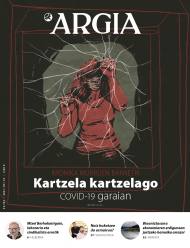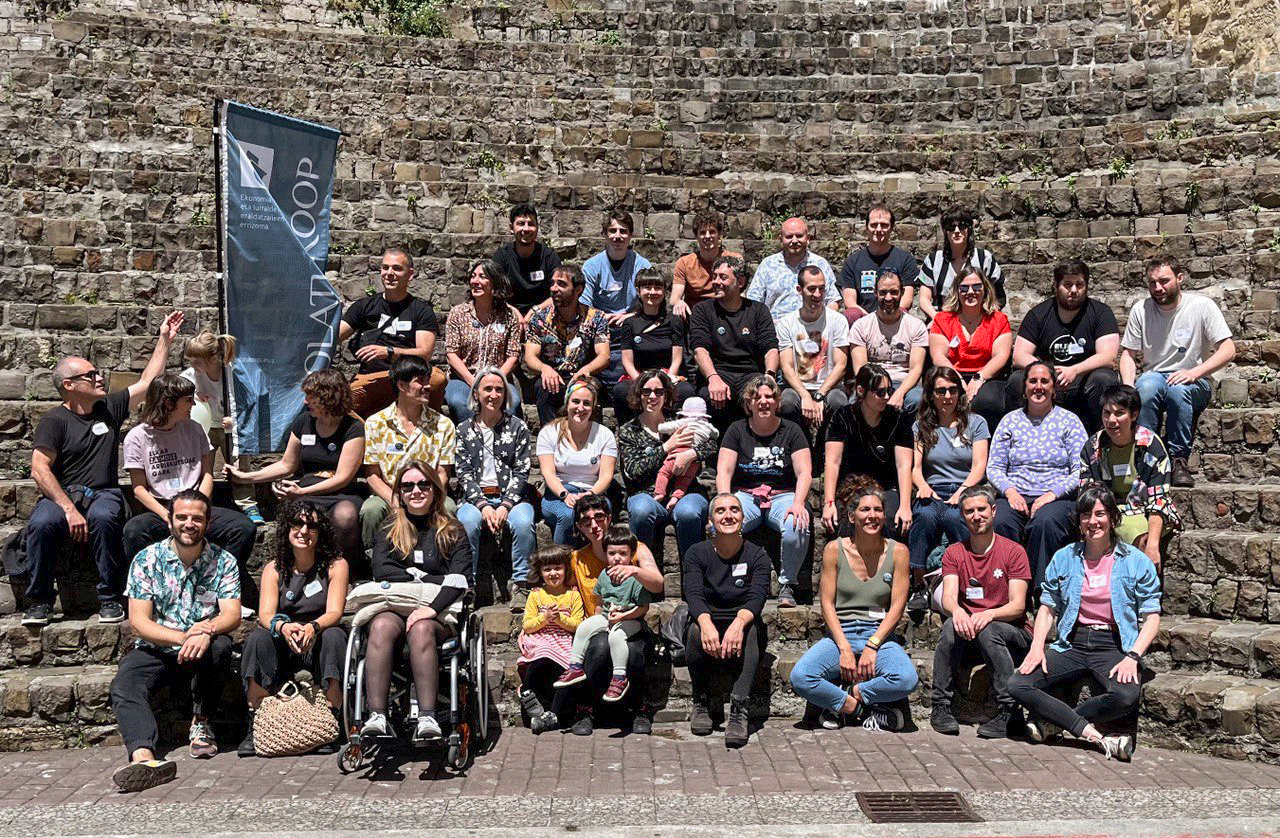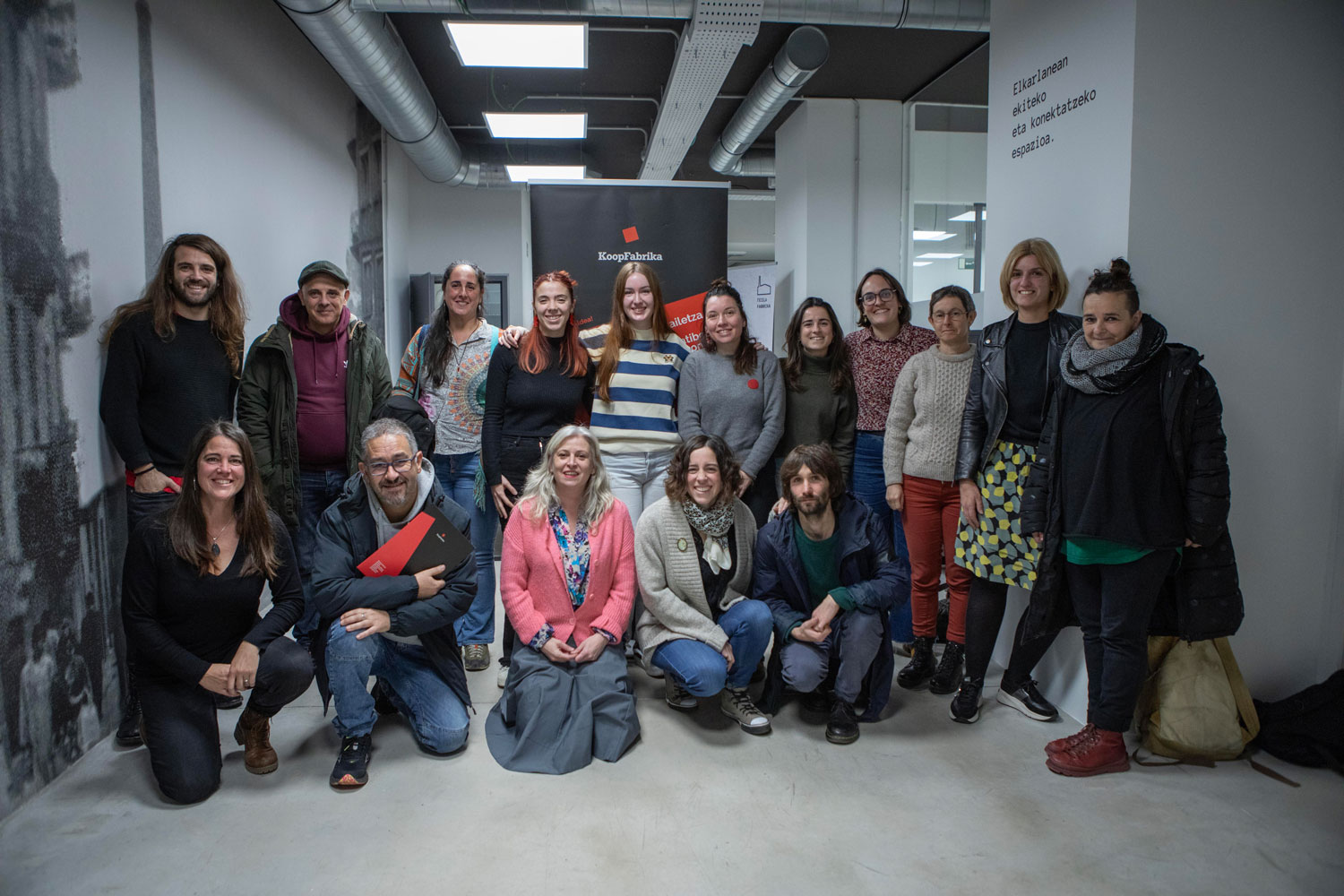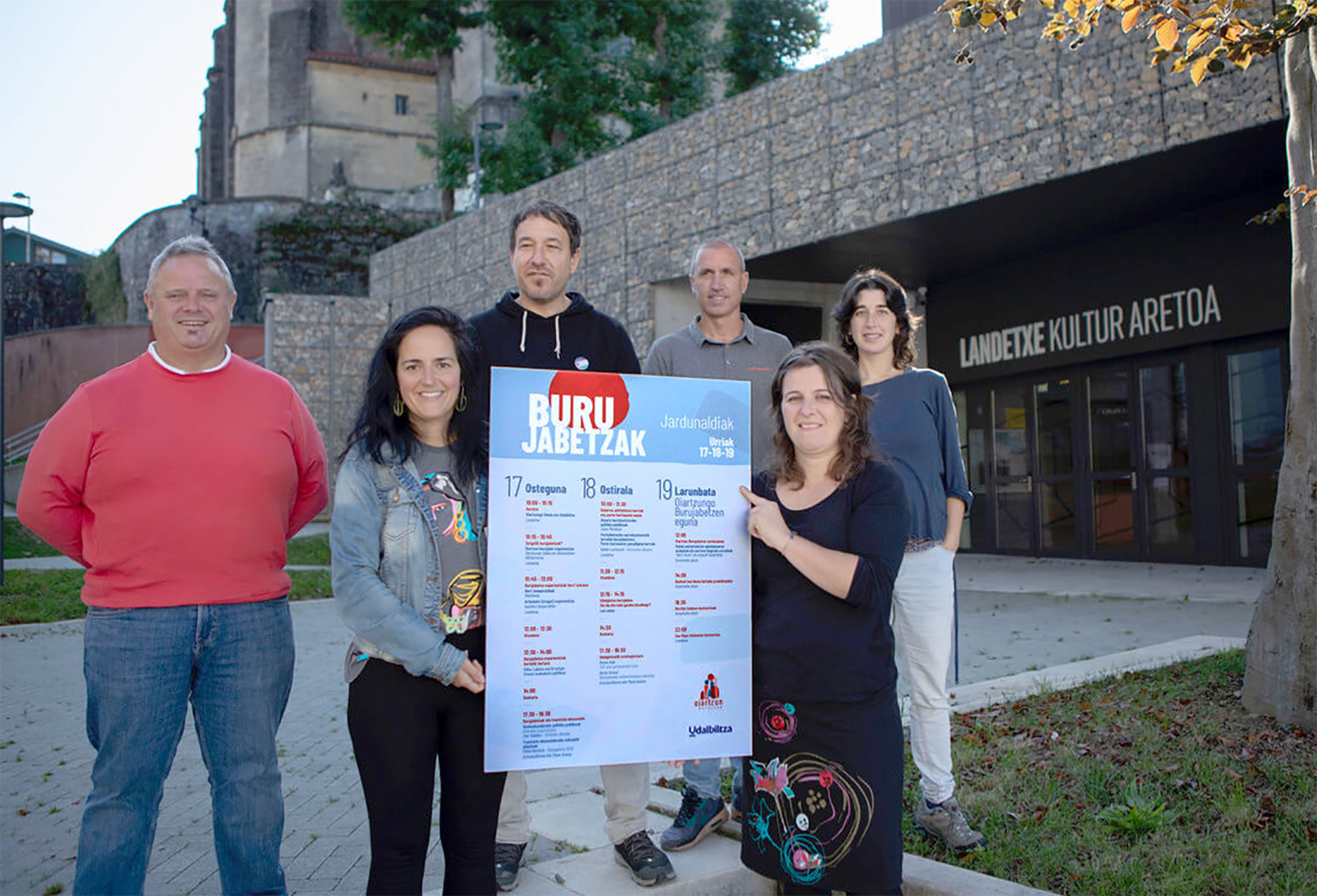Cooperation, social economy and culture
- The Texas Factory opened its doors in 2019, in the Donostiarra district of Egia. They rent work spaces, but they're not limited to it. The project is developed based on the axes of cooperation, the social economy and culture, in order to take root and influence the neighborhood.

The Donostiarra neighborhood of Egia is changing in recent years. The change comes from a long time ago, as the neighborhood where the dwellings and the dryers were were gradually industrialized and urbanized. This influenced, among other things, the factory of tiles and bricks Eguia S.A., inaugurated in 1903. The large fireplace in the factory was the main reference in the landscape of the neighborhood until its demolition in 1962. The factory lasted a few years, as it was definitively closed in 1936. However, that tiles factory and the one that it brought, is a sign of the life changes of the time. Shortly afterwards, the new tobacco factory was opened, next to the train station.
The landscape of the neighborhood has changed since then to the way its people work, or at least some of them. With the inauguration of Tabakalera in 2015 and the deepening of the gentrification of the neighborhood, coworking spaces have also increased in Egia. Spaces in which to share the space and projects that may arise from the collaboration even if they do their work individually. In this sense, the Texas Factory is also a space to share work space, but it has its peculiarities. The name and image are due to the old tile factory, and the project creators want it to be a place to feed and strengthen the community.
The Texas Factory
is a place for projects that act in function of the transforming values and aims to influence society. Project manager Aitziber Lizarribar states that the idea was taken by pulling the needs of the people around it. The confluence of people working in popular movements and around them, small, self-employed, working alone and in similar situations, allows them to empower and nurture mutual work, create networks. Because the project aims to offer more than space. They attach importance to the value of union from home, or rather than working alone. Not only in the professional sphere, but also in the informal sphere, for example, in the morning coffee there are interesting things coming out.
They develop the project based on three axes. One of them is collaboration. They have mechanisms to encourage collaboration. For example, let each propose what they can contribute to the community, either professionally or otherwise, and indicate what they would like to receive. By comparing these two lists, collaborative projects and connections for economic cooperation or knowledge sharing are generated. The social economy is another axis of the Texas Factory. It transversally traverses the project, from its space suppliers to its activities in rooms. In this sense, they are part of the Olatukoop network. The third axis is culture. Each month they organize two cultural activities, both with the soloists and with other projects in the neighborhood. Conferences, workshops, meetings. Recently, you don't hear it! It celebrated the second day of the musical cycle.

In 2019, conditioned by
Pandemia, the agents of the project neighborhood were informed before its dissemination. In June they began to work with some “solapists”, and during the summer it took time to complete the works and prepare the space well. In September of the same year they began their usual journey. Soon, however, its action was completely conditioned by the COVID-19 pandemic. The March closure had to adapt to meet and help weavers. In June 2020 they gradually resumed the march, adapting the space to health measures: protocol design, capacity building...
The importance
of space is more than space, but it's also space. And space itself is also important. It has three offices, common work spaces, meeting rooms and rooms. The offices are occupied, but there is still free space in the common work spaces. They are quite flexural and, as stressed by the manager Maddalen Serras, in other coworkings there are fixed minimum or maximum periods that favor flexibility in the Texas Factory. As for the rooms, they also have a room adaptable to the different events and activities. Before, the entities used it for the large assemblies, and now they use it more for the meetings of neighbors. Basically, it is about adapting the space and its resources to the needs of the users and not the other way around.
Serras and Lizarribar,
rooted in the neighborhood, live in Egia and want the Teja Factory itself to take root in the neighborhood. A sign of this rooting is the Egia Graphic Deposit with the Texas Factory as an attic. In the repository, one can see, among others, photographs showing the evolution of the neighborhood over these years. In addition, the Teja Factory acts as a participant in several projects in the neighborhood. They are willing to collaborate and would like to build the future course of the project in the community.
Nortasuna Sarean jardunaldien 10. edizioa egingo dute asteazken honetan Donostiako San Telmon, KomunikaziONA bideguruatzean izenburupean. Egungo komunikazio joerak aztertu eta "alternatiba osasuntsuagoak" topatzen saiatuko dira. Hainbat hizlari gonbidatu dituzte, euren... [+]
Gasteizko Eraman kooperatibak banaketa “era jasangarri eta etikoan” eginez bertako komertzioa bultzatzeko helburua du bere sorreratik, Arabako hiriburuan eta hango bizilagunengan pentsatuta. Hainbat ekimenetan parte hartzen du, horien artean ikasturte honetan egiten... [+]
Gure lurraldeetan eta bizitzetan sortzen diren behar, desio eta ekimenen inguruan gero eta gehiago entzuten dugu harreman eta proiektu publiko-komunitarioak landu beharraz, eta pozgarria da benetan, merkaturik gabeko gizarte antolaketarako ezinbesteko eredua baita. Baina... [+]
Budgets and the closure of annual accounts are nothing more at this time, from the domestic economy to most of the socio-economic spaces that we share. Large companies have begun to extract calculators and implement major plans for 2025. Small and medium-sized institutions and... [+]
I write these lines the day after the elections to the European Parliament, the dark times, the triumph of the Reactionary International in the elections to the European Parliament. It was already in advance and it is the confirmation of the conservative phase we live in, but it... [+]






















